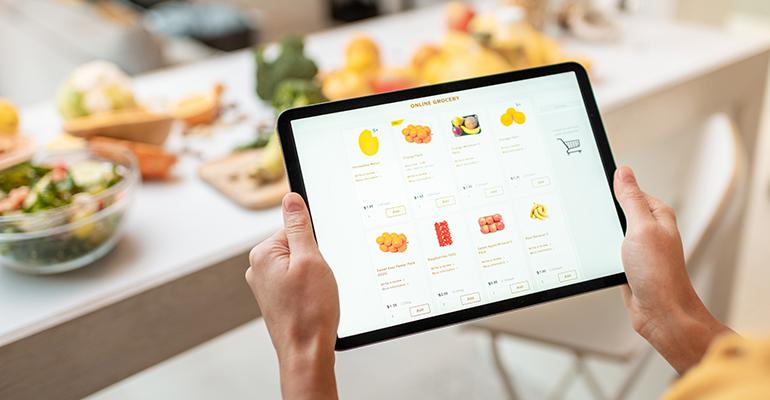Supermarkets surpass Amazon in online food shopping satisfaction study
The Feedback Group, which provides actionable stakeholder feedback, released findings from new national research conducted with 1,000 online food shoppers about their experience shopping for food and groceries.
Supermarkets topped the list with an impressive overall satisfaction rating of 4.40 on a five-point scale. Amazon followed closely behind with a score of 4.30, while mass retailers, primarily Walmart and Target, secured third place at 4.26. The research further indicated that value-oriented stores, such as Aldi, Lidl, and Grocery Outlet, achieved a rating of 4.11, followed by club stores at 3.99, and dollar stores rounded off the list with a 3.90 overall satisfaction score. Across all shoppers, the overall satisfaction score was 4.21.
Brian Numainville, a principal with The Feedback Group, commented, “The study findings emphasize the strong performance of supermarkets and Amazon in providing customers with a satisfying online food shopping experience. Mass retailers also demonstrate strong customer satisfaction levels. In contrast, value-oriented, club, and particularly dollar stores lag behind in satisfying consumer needs, with the results revealing a clear distinction between the top and bottom performers. Supermarkets clearly have benefitted from their investments in online food shopping capability improvements over the last several years.”
The study uncovers considerable generational differences in satisfaction with online shopping. Boomers are most satisfied, giving a 4.40 rating of their most recent experience. Generation X follows distantly with a 4.21 rating, while Millennials demonstrate a lower satisfaction level of 4.10. Overall satisfaction among Generation Z respondents is an even-lower 3.95 out of five.
“These results should motivate grocers to keep innovating when it comes to their online shopping experience,” observed Doug Madenberg, Chief Listening Officer of The Feedback Group. “Younger consumers – our future core customers – are active on so many digital platforms, eCommerce and otherwise, resulting in higher expectations than those of older shoppers.”
Overall, nearly nine out of 10 shoppers felt positive about the online user experience after ordering. However, online food shoppers expressed mixed feelings about their most recent online grocery provider as it related to various aspects of their online shopping experience. When asked if their online shopping service provides fair pricing given the convenience it offers, the average rating was a marginal 4.02 on a five-point agreement scale. Additionally, shoppers feel that their chosen online provider only moderately values them as a frequent customer, as reflected in a 3.99 rating. In terms of personalization, the study showed that customers perceive their online grocery provider’s understanding of their tastes and preferences to be somewhat lacking, with a 3.88 rating. Furthermore, when it comes to confidence in item availability when ordering, customers expressed concerns, as evidenced by a 3.84 rating, suggesting that online grocery providers need to address stock level issues to meet customer expectations more consistently.
Nearly eight out of 10 online shoppers purchase grocery online, while more than five in 10 purchase produce and meat, and nearly five in 10 buy dairy, bakery and deli. While produce leads the fresh departments purchased online (57% purchased), it also shows the lowest shopper confidence in quality, and falls short of highest quality standards more than any other fresh category.
Comparing the online shopping habits of urban, suburban and rural shoppers, the study reveals distinct online shopping preferences and behaviors. Urban shoppers show the highest inclination towards online shopping, with 49% planning to increase their frequency in the next year, and 58% using delivery services. More than half (54%) have their orders fulfilled by Instacart, DoorDash or Shipt. Suburban shoppers are slightly less inclined towards increasing their online shopping, with 42% planning to shop more online, and 57% choosing pick-up services. For this group, 45% have their orders fulfilled by the same major delivery services. Rural shoppers exhibit the most conservative online shopping habits, with only 40% planning to increase their online shopping, and 63% using pick-up services. Only 31% of rural shopper orders are fulfilled by Instacart, DoorDash or Shipt.
The research findings are available to supermarket retailers, distributors and other food industry companies. Please visit the Feedback Group website for more information.

